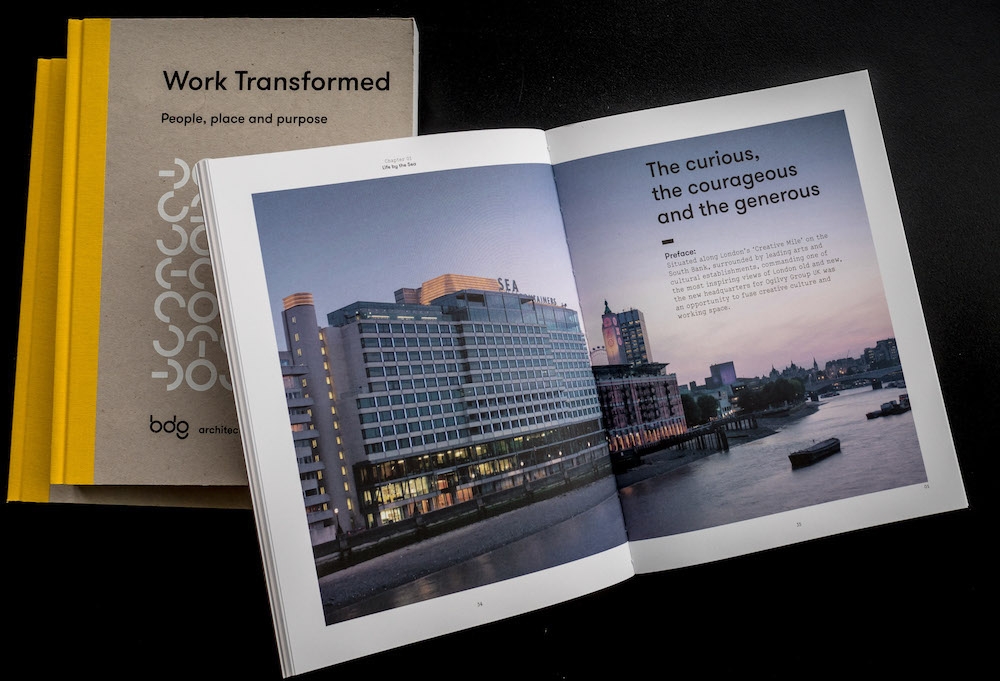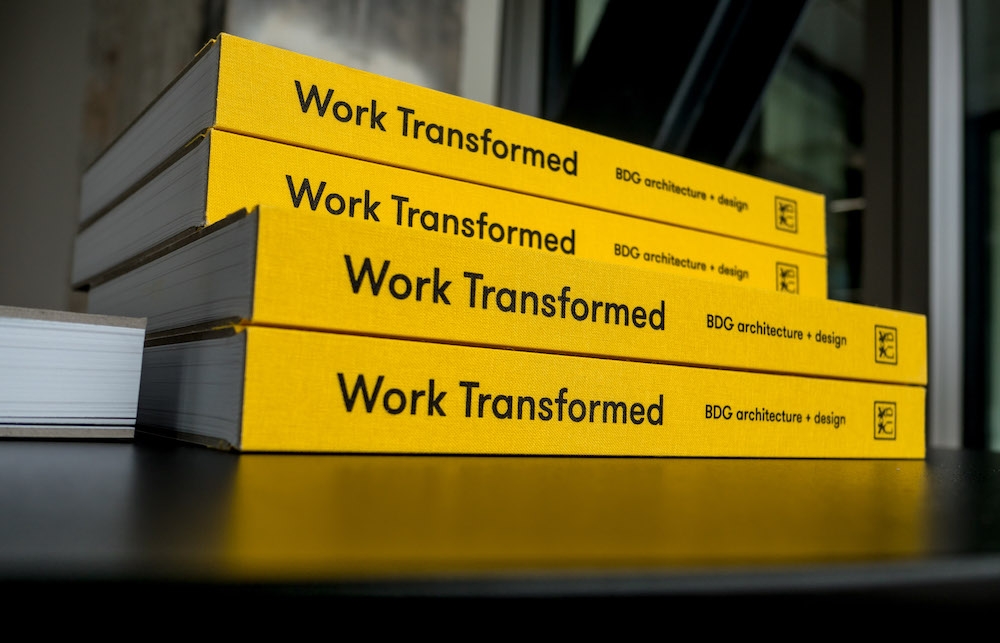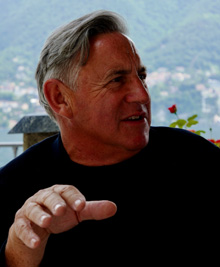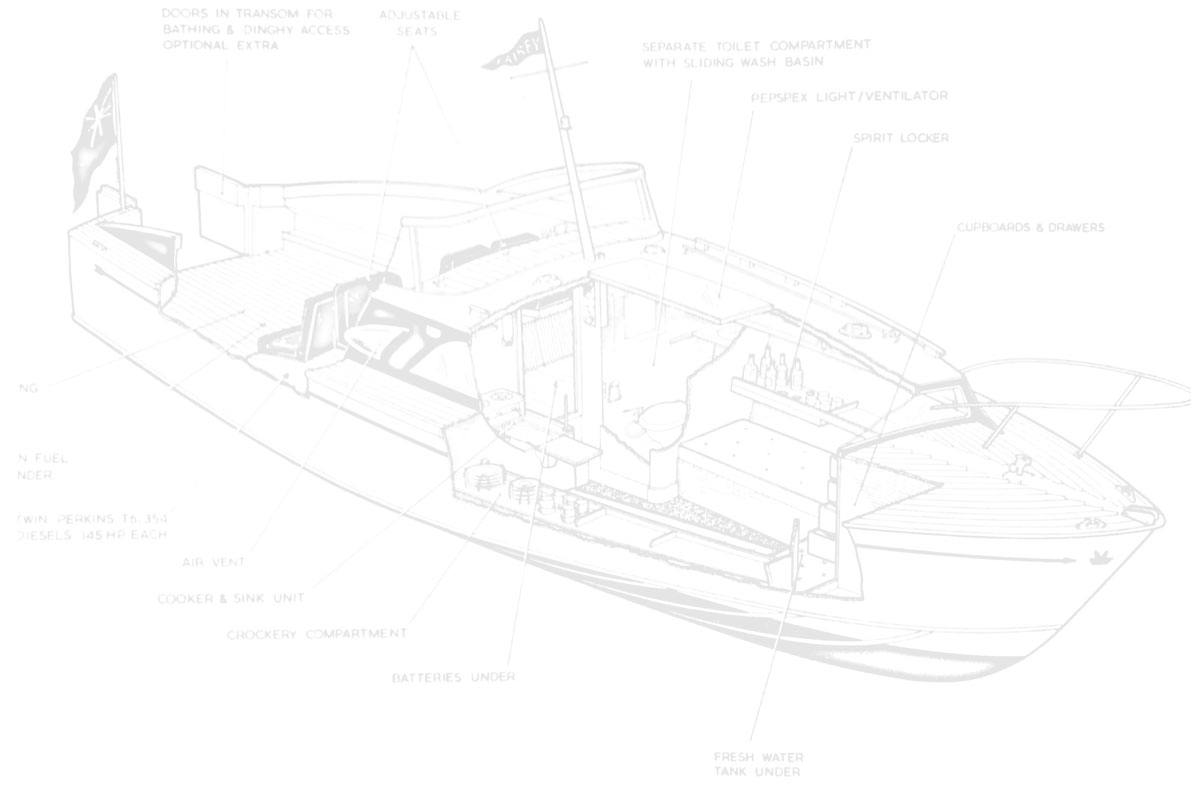Work Transformed: People, place and purpose.

Books from architectural practices often tend to be somewhat self-congratulatory. Written by the marketing department rather than the architects themselves, creating a tome of pretty, glossy pictures illustrating the work of said practice with benign, and indeed banal, commentary.
‘Work Transformed’, by the dynamic, award-winning firm, ‘BDG architecture + design’ is a book that transcends the onanistic. Indeed, one of the editors is the company’s CEO, Gill Parker, who provides a compelling argument for modern architecture in its subtitle, ‘People, place and purpose.’ Of course, whilst this sentiment is not an entirely original one, BDG has added the human element to the axiom of form following function of Chicago’s Louis Sullivan (1856 – 1924) which so influenced Frank Lloyd Wright.
Each of the buildings or projects discussed has its own narrative. In the section, ‘Life by the Sea’, the practitioners of BDG discuss its own recent (2014) integration into Sea Containers House. This building originally designed as a hotel by American architect William Platner in the 1970s immediately became a traditional office block of the period. Now home to BDG and other members of the WPP Group it also houses the Mondrian London Hotel, thereby bringing part of the building back to its original conceived use. Whether it be here on the South Bank of the River Thames, or its work in Germany, Spain, Portugal and Italy, BDG is searching to create environments in urban settings delivering spaces for use outside of conventional working hours.
Of course, much of BDG’s work is conducted in the City of London, and the adaptive re-use of work spaces in Clerkenwell, Finsbury Circus, Hatton Garden, as well as the Adelphi Building, and the ultra-sharp The Shard, makes for the main body of the collection of work in this book. But it is not just London that gets the BDG treatment as can be seen from the chapter entitled, ‘Northern Lights’. Here projects in Manchester and Leeds continue to help break down the north-south divide, demonstrating that the former industrial heartlands of Britain, and indeed the British Empire, have come a long way from William Blake’s ‘dark, satanic mills’, becoming just as cutting-edge and full of life as any other major European metropolis.
Reading through the 232 pages of this beautifully produced book published by LID of London and New York, and printed in Latvia by Jelgavas Tipogrãfij, I was reminded of the maxim of E.M. Forster’s 1910 novel ‘Howards End’, “Only connect!…”. The idea of connecting the old and the new, to link the personal with the public form of architecture. After all, as pointed out by Peter Murray, Chairman New London Architecture in his short but exemplary foreword, it is people who create cities and their buildings.
In D.H.Lawrence’s novel ‘The Rainbow’ (1915), the idea of connection is further explored, particularly in Chapter VII, ‘The Cathedral’, where the link between people and their physical artistic creations is examined. In a more prosaic and practical manner so too does ‘Work Transformed’, providing us with (utilising another Forster analogy) ‘A Room with a View’ to witness how one company continues to connect the modern with our heritage. BDG is at the forefront of global architectural trends, yet it can still think locally; it can be, as is this book, innovative yet closely attached and connected to what has gone before. The work of the modern architect of necessity needs to take into consideration the needs of the planet, to be ‘green’, without any of the perjorative associations of the word.
‘Work Transformed’ reflects all of this through its understated style of production, format, paper choice (though I wish the book told us somewhere what that is exactly), imagery, use of diagrams and axonometrics, typeface (again, I should recognise it, but a book of this nature should be listing it), yellow binding tape, hinge and spine, all helping to reinforce the narrative of BDG through the buildings and interiors it has created or re-interpreted.
This treatise (which deserves a better index), albeit centred on the work of just one architectural firm, is still a thoughtful and thought-provoking exploration of architecture and how we live with it in the 21stCentury. As Sir Winston Churchill said, “We shape our buildings, thereafter they shape us.”



